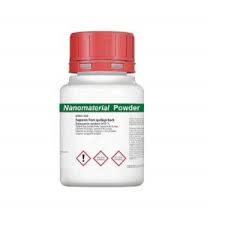
Activated Carbon Introduction Activated carbon is a non-graphitic form of carbon, which could be produced by activation of any carbonaceous material such as coconut
shells, bamboo, wood chips, sawdust, coal, lignite, paddy husk etc.
Chromium Carbide Application By Nanomaterialpowder Technology
Chromium Carbide Application Introduction Chromium Carbide Application Chromium Carbide is a chemical element with symbol Cr and atomic number 24. It is
the first element in Group 6. It is a steely-grey, lustrous, hard and brittle metal which takes a high polish, resists tarnishing, and has a high melting point. Chromium metal
is of high va…
cobalt nanoparticles properties By Nanomaterialpowder Technology
Cobalt Nanoparticles Properties Introduction Cobalt Nanoparticles Cobalt Nanoparticles is a Block D elements. The morphology of cobalt nanoparticles is spherical,
and their appearance is a grey or black powder. Cobalt nanoparticles have the ability to absorb electromagnetic waves. The magnetic fluid made of cobalt nanoparticles
provides exce…
Iron Nanoparticles Properties Highly Pure By Nanomaterialpowder
IRON NANO POWDER Iron nanoparticles are metal particles and comes in the size range of 10 – 100 nm (approx.) Iron is represented by the symbol
‘Fe’ and found in nature in three forms i.e. alpha, beta and gamma.Iron nanoparticles shows excellent reactivity with oxygen and water as compare to bulk
iron. Iron Nanoparticl…
Iron Oxide Nanoparticles Magnetic Drug Delivery
IRON OXIDE NANOPARTICLES Iron (Fe) nanoparticles are metal particles, in the range of 10-100nm (approx.) Iron nanoparticles have three allotropic forms known as
alpha, beta and gamma. Iron nanoparticles readily forms oxides. When Fe-nanoparticles reacts with air / oxygen, it readily forms Fe2O3 and Fe3O4 are formed which are
named as hematite and …
